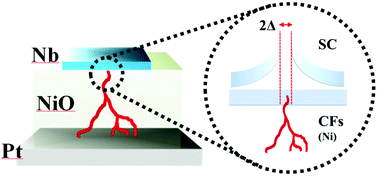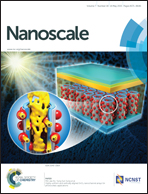A new simple method for point contact Andreev reflection (PCAR) using a self-aligned atomic filament in transition-metal oxides†
Abstract
Point contact Andreev reflection (PCAR) has become a standard method for measuring the spin polarization (P) of spintronic materials due to its unique simplicity and the firm physical ground, but it is still challenging to achieve a clean point contact between a superconductor (SC) and a metal (N) for implementing PCAR. In this work, we suggest a much simpler method for PCAR measurement, where a point contact between SC and N is provided by a metallic filament in a transition-metal oxide generated by electrical bias. This method has been successfully demonstrated using a structure composed of Nb/NiO/Pt, where P of the Ni filament was estimated to be about 40%, consistent with the known value of the bulk Ni. In addition, we investigated the dependence of the conductance spectrum on the measurement temperature and the magnetic field. We found that the superconductivity is not fully suppressed until 9 T far above the critical field of Nb, which is associated with the nm-sized constriction of our SC/N junction, much smaller than the coherence length of the SC.


 Please wait while we load your content...
Please wait while we load your content...